
The variation of the refractive index of a crown glass thin prism with the wavelength of the light is shown. Which of the following graphs is the correct one, if the ${D_m}$ is the angle of minimum deviation?
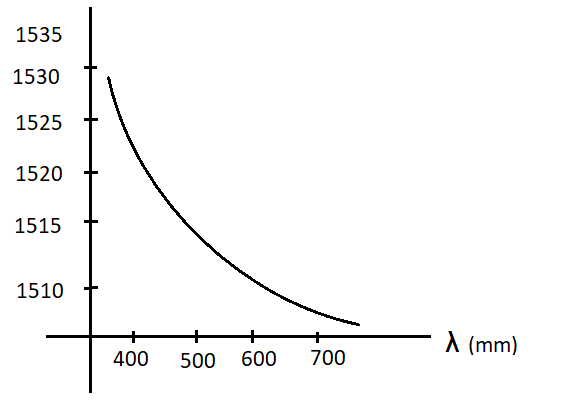
A)
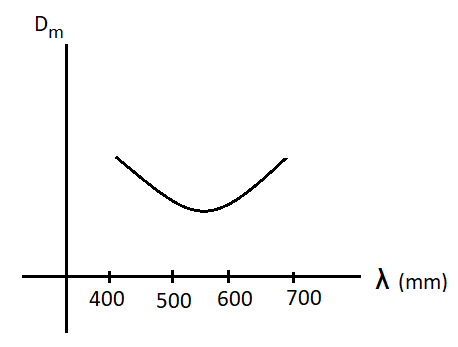
B)
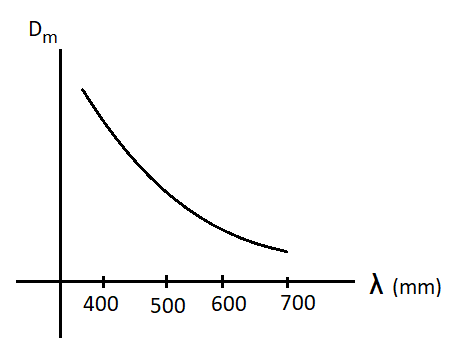
C)
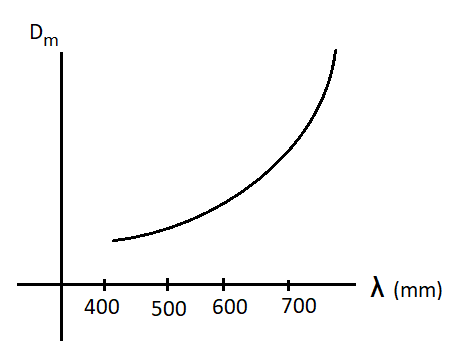
D)
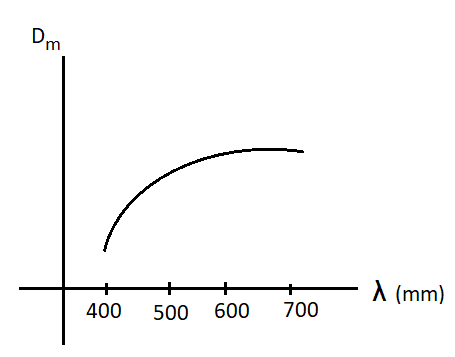





Answer
556.2k+ views
Hint: The above problem is based on the concept of the angle of deviation. The angle of deviation varies with the variation in the refractive index. If the incidence angle and refraction angle are the same then the light bends minimum and angle is called angle of minimum deviation.
Complete step by step answer:
The expression of angle of minimum deviation is given as,
${D_m} = 2{\sin ^{ - 1}}\left( {n\sin \left( {\dfrac{A}{2}} \right)} \right) - A$
Here, n is the refractive index, A is the angle of the prism.
As we can observe from the above expression that the angle of minimum deviation varies with the refractive index. If the value of the refractive index increases then the angle of minimum deviation also increases.
The angle of minimum deviation in the graph of option (B) varies according to the refractive index of crown thin glass, so the option (B) is correct and other options are incorrect.
Therefore, the option (B) is correct.
Additional Information:
If the refractive index of the medium is more than the medium of incident ray then the angle of minimum deviation increases and decreases if the refractive index is lower than the refractive index of the incident medium.
Note: The refractive index of the incident medium may change due to variation in outside condition, so angle of minimum deviation should be calculated in stable conditions. The speed, wavelength and frequency of the light also vary with the variation in the refractive index. The speed of the light remains more in the rare medium than the speed of light in a dense medium.
Complete step by step answer:
The expression of angle of minimum deviation is given as,
${D_m} = 2{\sin ^{ - 1}}\left( {n\sin \left( {\dfrac{A}{2}} \right)} \right) - A$
Here, n is the refractive index, A is the angle of the prism.
As we can observe from the above expression that the angle of minimum deviation varies with the refractive index. If the value of the refractive index increases then the angle of minimum deviation also increases.
The angle of minimum deviation in the graph of option (B) varies according to the refractive index of crown thin glass, so the option (B) is correct and other options are incorrect.
Therefore, the option (B) is correct.
Additional Information:
If the refractive index of the medium is more than the medium of incident ray then the angle of minimum deviation increases and decreases if the refractive index is lower than the refractive index of the incident medium.
Note: The refractive index of the incident medium may change due to variation in outside condition, so angle of minimum deviation should be calculated in stable conditions. The speed, wavelength and frequency of the light also vary with the variation in the refractive index. The speed of the light remains more in the rare medium than the speed of light in a dense medium.
Recently Updated Pages
A man running at a speed 5 ms is viewed in the side class 12 physics CBSE

The number of solutions in x in 02pi for which sqrt class 12 maths CBSE

State and explain Hardy Weinbergs Principle class 12 biology CBSE

Write any two methods of preparation of phenol Give class 12 chemistry CBSE

Which of the following statements is wrong a Amnion class 12 biology CBSE

Differentiate between action potential and resting class 12 biology CBSE

Trending doubts
What are the major means of transport Explain each class 12 social science CBSE

Which are the Top 10 Largest Countries of the World?

Draw a labelled sketch of the human eye class 12 physics CBSE

How much time does it take to bleed after eating p class 12 biology CBSE

Explain sex determination in humans with line diag class 12 biology CBSE

Explain sex determination in humans with the help of class 12 biology CBSE




